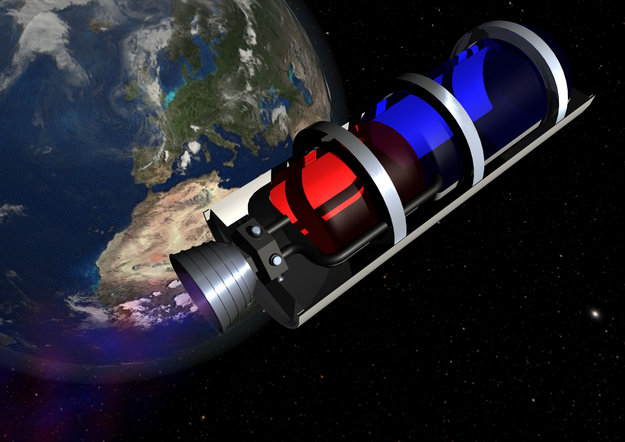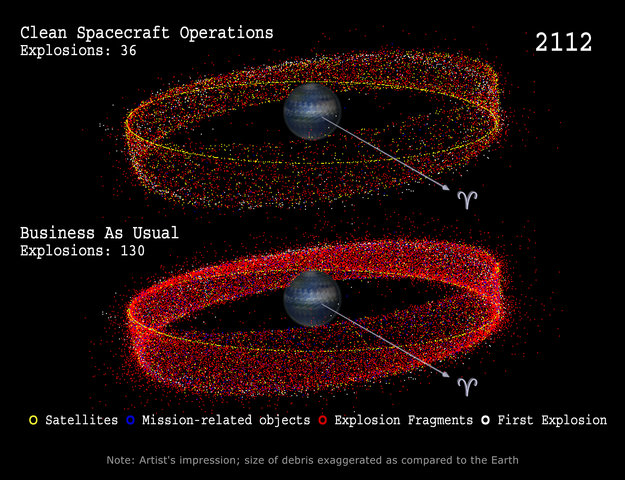.

So far, about 200 explosions and at least 5 collisions in space have occured. Further explosions and collisions are very likely. The explosions are mainly caused by onboard energy sources, either due to pressure build-up in propellant tanks, battery explosions, or the ignition of hypergolic fuels. Each explosion creates thousands of small debris objects.
The most prominent collision event and the first known one between two catalog objects was in 1996 between the Cerise Satellite and a fragment of an Ariane upper stage explosion.
.
Across a satellite’s working life, batteries keep the craft’s heart beating whenever it leaves sunlight. But after its mission ends, those same batteries may threaten catastrophe.
Space debris mitigation rules require the complete deactivation of electrical power sources aboard a satellite on retirement, in order to guard against explosive accidents that might produce fresh debris dangerous to other satellites.
Now a new study by ESA’s Clean Space initiative – tasked with reducing the space industry’s environmental impacts on both Earth and space – aims to evaluate battery behaviour after a satellite shuts down, assessing the risk of breakup and ensuring full ‘passivation’.
Batteries are among a satellite’s bulkier items of equipment. Typically, they feed their host with power during launch. Once in orbit, it switches to power from its solar arrays, but the battery is an important backup to store power for eclipses and emergencies.
To reach the high reliability and performance a satellite demands, extending across many months or years, batteries are carefully designed and extensively tested in advance of launch.
By contrast, their behaviour after their parent mission has been shut down remains a relative blind spot.
As a satellite drifts freely, could batteries endure the harsh environment of orbit – including wild temperature swings, degradation of thermal control and components as well as radiation exposure – without leakage or bursting?
Some past satellite breakups have been triggered by battery malfunctions, although mostly before the 1990s and involving older non-lithium designs.
This multidisciplinary study aims to ensure a fully inert power system at the end of a mission, perhaps through physical disconnection, while also preventing accidental premature passivation.
Bidders are welcome on this contract. For more information check the invitation package, accessible via ESA’s tendering system.
.

To prevent the explosion of rocket upper stages, they must be passivated after payload separation. Upper stages of US-Delta rockets, for instance, perform an idle burn, while European Ariane and Japanese H-1 stages perform a venting operation to release remnant fuel. Likewise, also batteries should be discharged, and pyro devices should be deactivated at mission completion.
.

It is crucial to that we start immediately to implement mitigation measures. This image shows a simulation of the future GEO environment in the case when no measures are taken; this is the "business-as-usual" scenario. In the top panel, with mitigation measures, a much cleaner space environment can be observed, if the number of explosions is reduced drastically, and if no mission-related objects are ejected. However, to stop the ever-increasing amount of debris, more ambitious mitigation measures must be taken. In the long run, spacecraft and rocket stages have to be returned to Earth after completion of their mission.
.

A measure against space debris is minimizing the number of objects released during spacecraft operations. Typical "mission-related objects" (MRO) include adapters used between two satellites in a dual launch, telescope covers, bolts, cast off yo-yo despinners, etc. Spacecraft designers and operators must design missions so that objects stay attached to the spacecraft and do not become additional space debris.
.
Quelle: ESA
